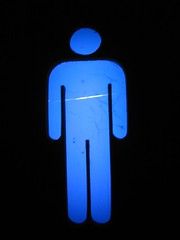The health test every man should do

When 39-year-old Charlie Thomson discovered he had a suspicious lump in one testicle (or testis), he was less concerned that it might be cancer and more shocked by the news that the only way to find out was to have the entire testis removed.
My urologist said, 'The only way to find out is to chop it off,' Thomson says. It freaked me out.
The fact that you should not biopsy the area due to the risk of the cancer spreading was just one of the facts Thomson didn't know about what is one of the most common cancers in men his age.
Second only to melanoma, testicular cancer, while still relatively rare, occurs most frequently in men aged 15 to 45, and there are about 600 new cases each year.
Testicular cancer occurs when the cells in the testicles grow abnormally and develop into a tumour, commonly a seminoma in men aged 25 to 55 and a nonseminoma in men aged 15 to 30. Usually only one testis is affected, but it may spread through the lymph nodes to the abdomen, lungs, liver, bone or brain.
There is no widespread screening for testicular cancer and it is only after symptoms arise that most men are diagnosed.
This usually doesn't pose a problem, says Dr Ronald McCoy, an adjunct lecturer at the University of Sydney and senior medical educator and spokesperson for the Royal Australian College of General Practitioners (RACGP). He says most men are familiar with their testicles and will notice fairly quickly if there is a swelling or lump.
It took Thomson six months to take his lump seriously. Yet if the cancer is found before it spreads, there is a 95 per cent survival rate.
The surgery, or orchidectomy, involves an incision above the pubic bone in the groin. The testis is pulled up and out by the spermatic cord. It usually takes an hour and, like Thomson (who had a rare Leydig cell tumour which seems to be benign), you'll be out of the hospital the next day and able to do heavy lifting in six weeks.
Even when it has spread, a lot of men do very well, Dr McCoy says. Most testicular cancer is responsive to chemotherapy and radiotherapy.
What causes it?
The incidence of testicular cancer has more than doubled in the past 30 years, and the reasons for this are hotly debated. What is known is that you have a higher risk if you are white, have a family history of the cancer, were born with an undescended testicle or other congenital abnormalities, or are infertile. The roles of lifestyle and environment are less clear.
Many researchers are pointing towards oestrogen, which plays a big part in the sexual development of a foetus. Scientists believe too much at the wrong time may hinder development and studies have shown that the cancer is higher in first-born children, non-identical twins and children with older mothers, all of whom had elevated levels of maternal oestrogen during pregnancy.
Others argue that the rise in testicular cancer parallels the rise in obesity, particularly in maternal body weight, and blame rich diets which boost oestrogen levels.
Exposure to certain agro-chemicals and the possible impact of the contraceptive pill are also being examined.
A Seattle cancer research centre also found that frequent and/or long-term marijuana use might significantly increase a man's risk of developing the most aggressive type of testicular cancer. In fact, being a pot smoker at the time of diagnosis meant a 70 per cent increased risk.
Other theories include low birth weight, reaching puberty at a younger age, certain childhood viral infections and even underwear; boxers, some argue, are better than briefs.
None of these have been conclusively tied to testicular cancer, and more research is required.
Sexual health
One of men's greatest fears is the effect surgery will have on their sex life, masculinity and fertility. Dr McCoy says they needn't worry.
You only need one testicle to have children, he says. Even if your sperm count drops from 40 to 20 million, that's still okay. Only five per cent of the fluid in the ejaculate comes from the testicle and 95 per cent comes from the prostate gland, so it usually doesn't affect the ejaculate volume or your ability to have an erection.
Many younger men have an artificial prosthesis implanted that has the weight and feel of a normal testicle.
Check yourself
Step 1: Take a warm bath or shower so your scrotum is relaxed.
Step 2: In front of a mirror, support the scrotum with a palm to become familiar with your testes. It's normal for one to be larger or hang lower than the other.
Step 3: Roll each testis with both hands to feel for lumps or swelling. There should be no discomfort.
Step 4: Check for swelling along the epididymis at the back of the testis. Repeat once a month.
Step 5: If you find a lump or swelling, see a GP. Most lumps are painless but there can be a feeling of heaviness or pain in the testes or lower abdomen. The GP may suggest an ultrasound and blood tests.
www.cancercouncil.com.au





















